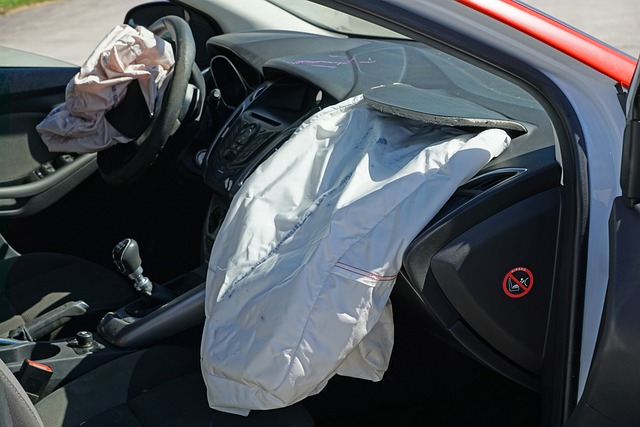Full Coverage Auto Insurance Explained offers drivers extensive protection against various road risks, including accidents, theft, vandalism, and natural disasters. Unlike basic liability insurance, it covers collision damage and provides comprehensive coverage for non-collision events. This type of insurance includes liability protection, collision coverage, legal fees, medical bills, rental car reimbursement, and roadside assistance. It's recommended for high-risk drivers or those with valuable vehicles, ensuring peace of mind and financial security in unexpected situations. Understanding policy details, deductibles, and exclusions is key to choosing the best plan that suits individual needs and budget.
In today’s world, full coverage auto insurance is not just a consideration—it’s essential protection for every driver. This comprehensive guide, ‘Full Coverage Auto Insurance Explained,’ breaks down everything you need to know about this vital type of car insurance. We’ll explore the benefits, different policy types, and how to choose the right fit. Understand common exclusions, the claims process, and cost analysis to make an informed decision. By the end, you’ll be equipped to navigate the landscape of full coverage auto insurance with confidence.
Understanding Full Coverage Auto Insurance: What It Covers

Full Coverage Auto Insurance Explained
Full coverage auto insurance is designed to protect drivers against a wide range of potential risks on the road. It goes beyond the basic liability coverage, which only covers damages caused by the policyholder to others and their property. Full coverage includes both collision and comprehensive components. Collision coverage steps in when your car experiences damage due to a crash with another vehicle or object, paying for repairs or replacement up to your policy limits. Comprehensive insurance, on the other hand, covers damages from non-collision events like theft, vandalism, natural disasters, and even animal strikes.
Understanding what full coverage auto insurance covers is crucial as it provides financial protection in various scenarios. It ensures that you’re not left with a hefty bill for unexpected incidents. This type of insurance offers peace of mind, knowing that your vehicle and its occupants are safeguarded in the event of an accident or other covered circumstances.
Different Types of Full Coverage Policies

Full coverage auto insurance is a comprehensive protection plan that goes beyond the standard requirements, offering peace of mind for drivers in the event of an accident or damage to their vehicle. It’s an essential consideration for anyone on the road, as it provides a safety net against various risks. The policy typically includes liability coverage, which protects you from financial responsibility for damages caused to others in an accident, and collision coverage, designed to cover repairs or replacement costs if your car is damaged due to a collision.
But full coverage isn’t one-size-fits-all. Policies can vary in their specifics, offering different combinations of coverage options. For example, some policies may include comprehensive coverage, which covers damages from events like theft, vandalism, or natural disasters, providing broader protection for your vehicle’s overall condition. Others might feature additional perks like rental car coverage during repairs or roadside assistance services, ensuring you’re supported in various driving scenarios. Understanding these diverse policy options is crucial when selecting the right full coverage auto insurance to match your specific needs and budget.
Benefits of Carrying Full Coverage Insurance

Full Coverage Auto Insurance Explained offers drivers comprehensive protection, ensuring they’re prepared for a range of unforeseen circumstances on the road. Unlike basic liability insurance that covers damage to others’ property and medical expenses up to specific limits, full coverage encompasses additional essential aspects. This includes collision coverage, which pays for repairs or replacement of your vehicle if it’s damaged in an accident—regardless of fault. Also included is comprehensive coverage, designed to protect against non-collision incidents like theft, natural disasters, or vandalism.
By opting for Full Coverage Auto Insurance, drivers gain peace of mind knowing they’re shielded from substantial out-of-pocket expenses. In the event of a claim, these policies cover not only the cost of repairs but also provide rental car reimbursement during the repair period. Moreover, full coverage insurance can help maintain a clean driving record by waiving certain fees associated with at-fault accidents, thereby keeping premiums more manageable over time.
Who Needs Full Coverage Auto Insurance?

Full Coverage Auto Insurance Explained: Who Needs It?
Every driver on the road faces risks, and having adequate auto insurance is essential for financial protection in case of accidents or damage to your vehicle. Full Coverage Auto Insurance offers comprehensive protection against various unforeseen circumstances that may arise while driving. This type of insurance policy is designed to shield you from significant financial burdens by covering not only direct costs like repairs but also indirect expenses such as legal fees and medical bills.
Full coverage is ideal for drivers who want peace of mind, especially if they drive frequently or have a history of claims. It’s particularly crucial for those with high-value vehicles, young or inexperienced drivers, or individuals living in areas with higher accident rates. By opting for full coverage, you ensure that your financial situation remains secure during unexpected events on the road.
How to Choose the Right Full Coverage Plan

When selecting a full coverage auto insurance plan, understanding your needs and preferences is crucial. Start by evaluating your vehicle’s value; if it’s expensive, opt for higher coverage limits to ensure comprehensive protection. Consider your driving history and experience; younger or less experienced drivers might require more extensive coverage due to increased risk factors. Additionally, assess the potential risks in your area, such as high crime rates or severe weather conditions, which could impact your decision.
Full Coverage Auto Insurance Explained offers various benefits, including liability protection, collision coverage, comprehensive insurance, and often includes perks like roadside assistance and rental car coverage during repairs. Compare different providers’ policies, focusing on the specific details of each plan. Review the deductibles, coverage limits, and exclusions to ensure they align with your financial comfort level and risk appraisal. Remember, the right full coverage plan should provide peace of mind while offering tailored protection for your automotive needs.
Common Exclusions in Full Coverage Policies

Full coverage auto insurance is designed to protect drivers and their vehicles from a wide range of financial burdens associated with accidents, theft, or damage. However, even with comprehensive protection, certain events are commonly excluded from full coverage policies. These exclusions can vary between insurance providers, but some of the most typical include: natural disasters like floods, earthquakes, or severe weather conditions; war or civil unrest; and willful acts or vandalism.
It’s important to note that while full coverage offers significant protection, it doesn’t cover everything. Understanding these exclusions is crucial when considering full coverage auto insurance. This awareness enables drivers to make informed decisions about their policy choices and ensure they’re adequately protected against the risks they face on the road.
Claims Process and Procedure for Full Coverage

When it comes to full coverage auto insurance, understanding the claims process is crucial for ensuring a smooth and stress-free experience after an accident. The first step in this procedure begins with notification. As soon as a policyholder is involved in a crash, they should promptly contact their insurance company to report the incident. This initial call sets into motion the claims process, where the insurer assigns a claim representative who will guide the policyholder through every step.
During this stage, the insured individual provides details about the accident, including dates, times, and locations. They also share relevant information like vehicle specifications and any injuries sustained. The insurance company then initiates an investigation by gathering evidence, such as police reports, witness statements, and medical records, to accurately assess the circumstances surrounding the incident. Once all necessary data is collected, the claims representative will provide a quote for the repair or replacement costs, ensuring full coverage auto insurance benefits are utilized effectively.
Cost Analysis: Is Full Coverage Worth It?

Full Coverage auto insurance, while often misunderstood, offers comprehensive protection for drivers. It goes beyond the standard policies by covering not just liability, but also damages to your vehicle in case of accidents or other incidents such as theft or natural disasters. Understanding its value involves a cost-benefit analysis – is the peace of mind worth the additional premium?
One way to gauge this is by looking at potential scenarios. If you drive an older car with low resale value, the cost of full coverage might be justified compared to insuring it on a per-incident basis. However, for newer vehicles or those with higher resale values, the out-of-pocket expenses for full coverage could outweigh the risks, prompting drivers to consider more tailored policies.
